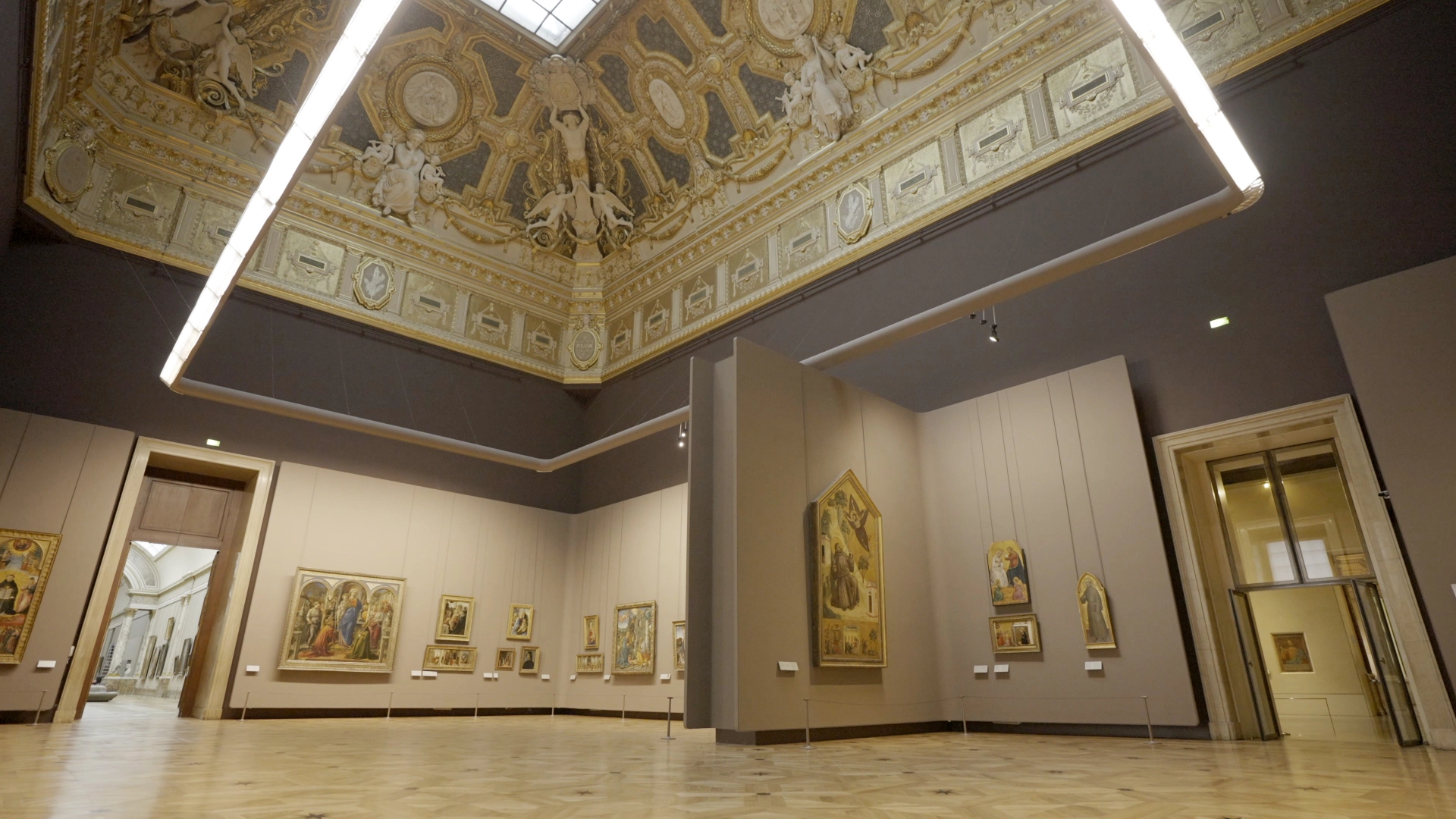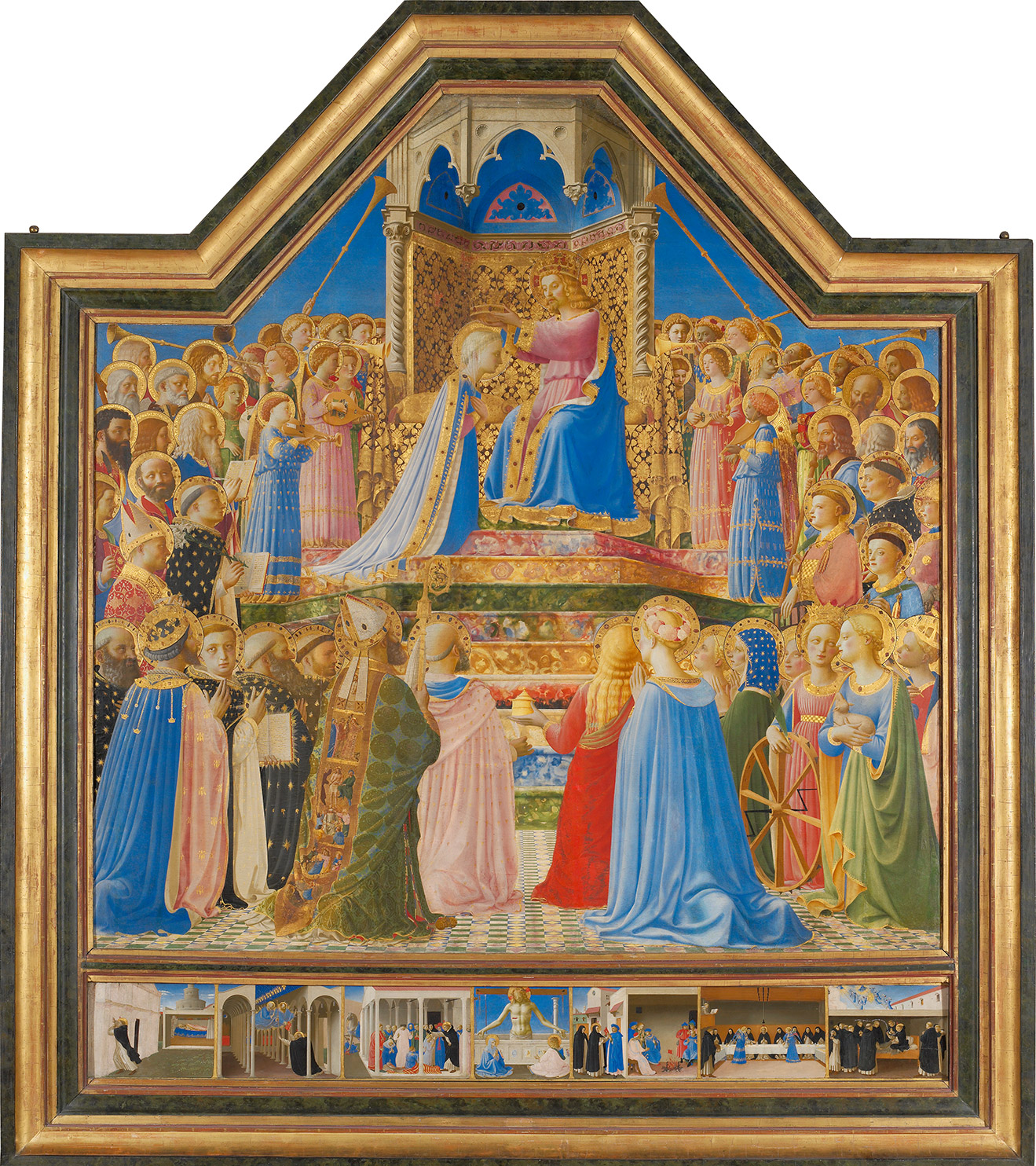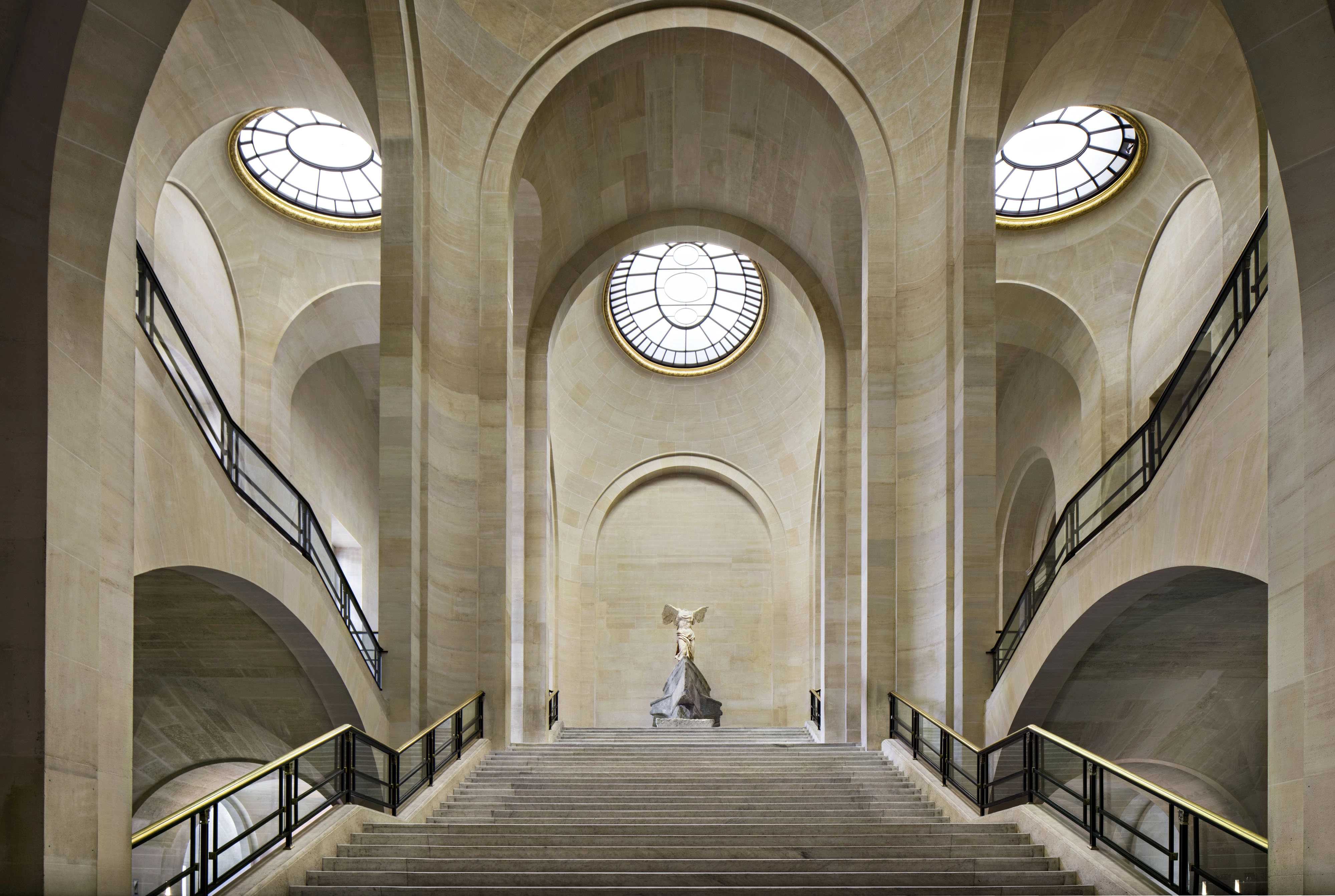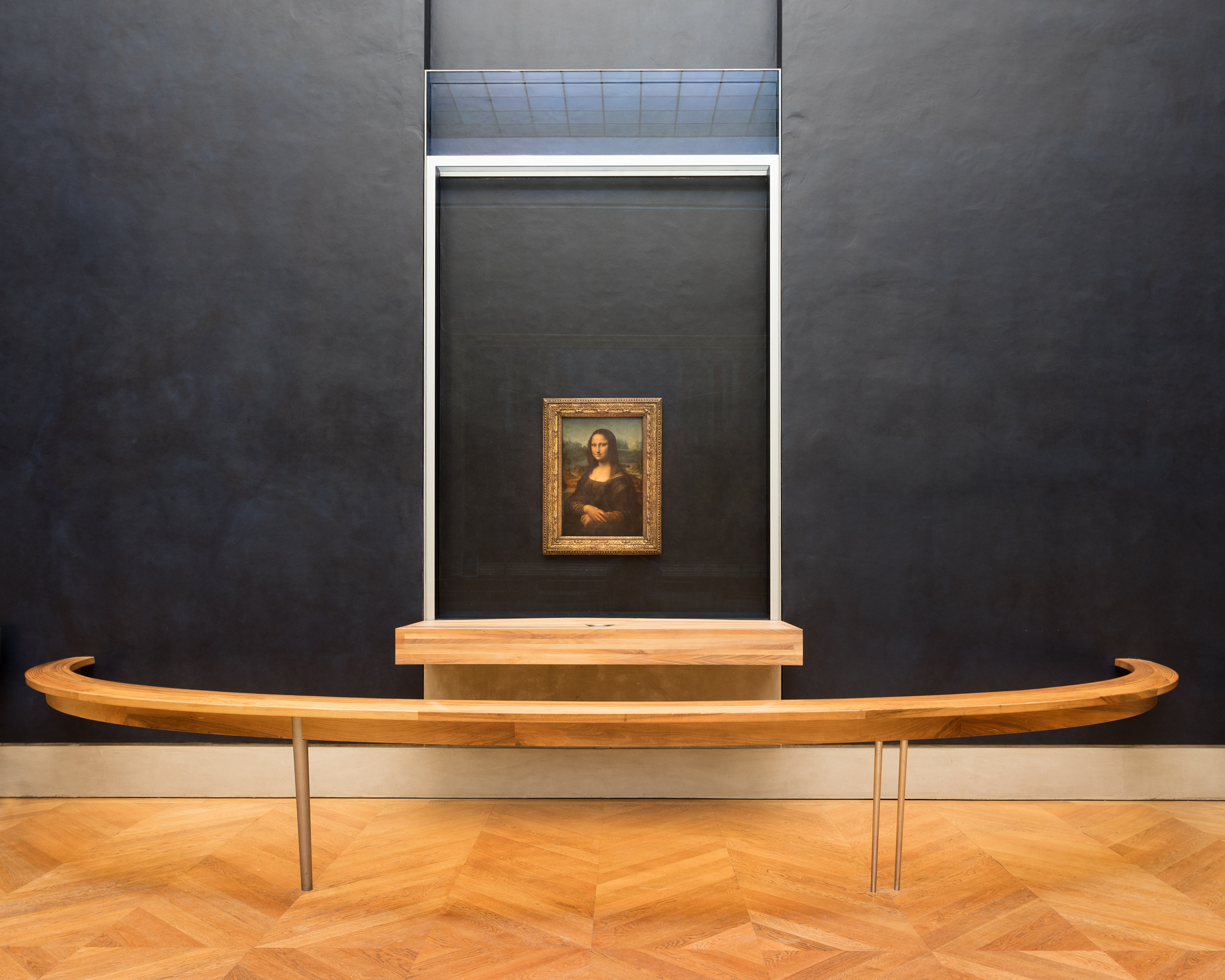Friday 19 December:
The museum is open today. Due to a strike, some rooms are exceptionally closed today.
We apologise for the inconvenience.
The Salon CarréThe original Salon
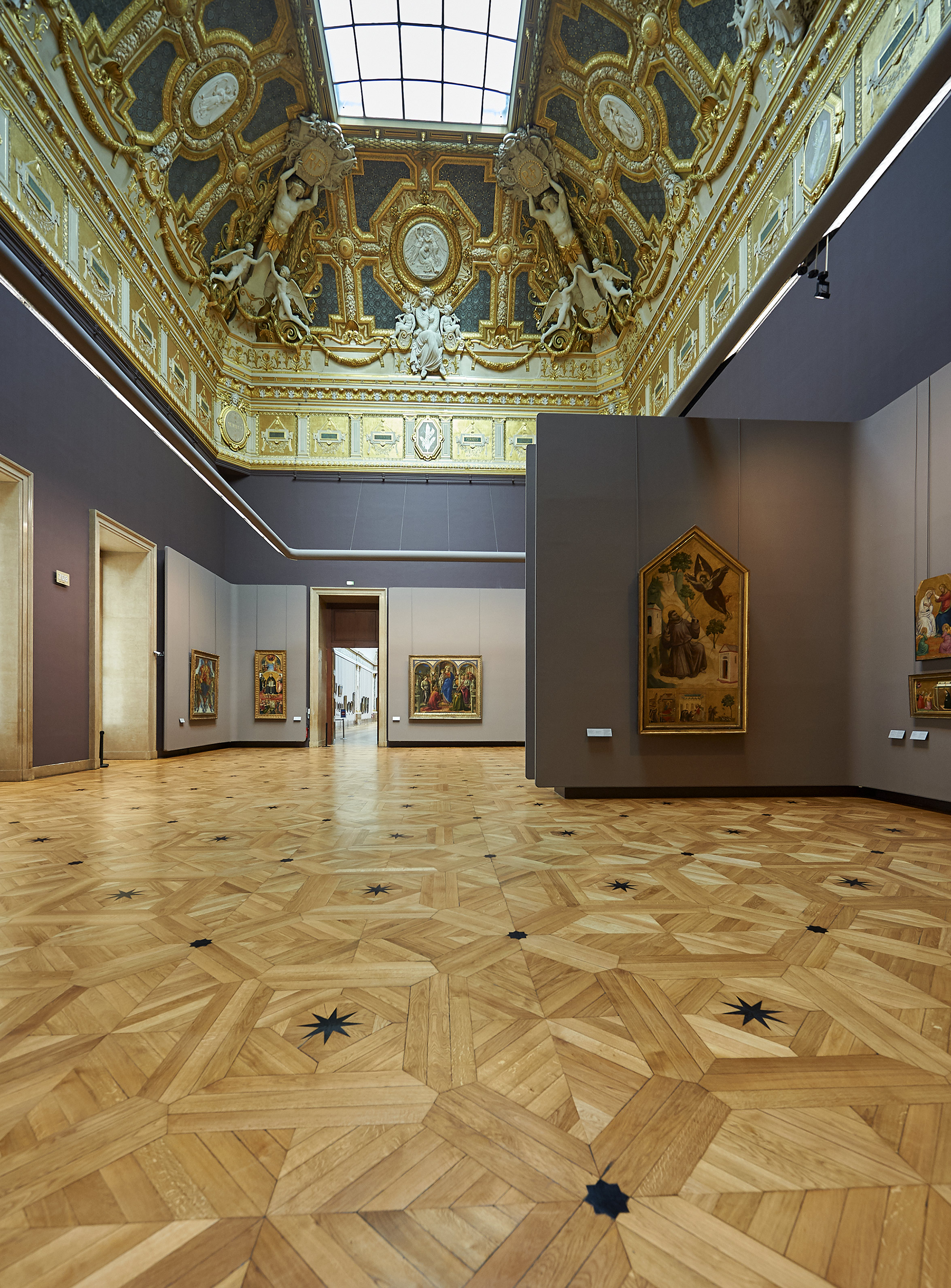
One of the Louvre’s most famous rooms is a space that has been dedicated to the arts for centuries. This room gave its name to all of the Paris ‘Salons’, or exhibitions of living artists.
Although the adjective 'carré' generally means ‘square’ in French, the Salon Carré is, in fact, rectangular. Here, 'carré' means ‘orthogonal’, or ‘having right angles’, in reference to the room’s regular quadrilateral shape.
From the Sun King to the Royal Academy of Painting and Sculpture
The room was designed by Louis XIV’s architect, Louis Le Vau, who rebuilt this part of the Louvre after it was damaged by a fire in 1661. It connects two important rooms in the palace: the Galerie d’Apollon and the Grande Galerie. After the Sun King moved his court to the Château de Versailles in 1682, the Salon Carré was allocated to the Royal Academy of Painting and Sculpture in 1692. The members of the Academy would meet and exhibit their new works to the public there. The ‘Salon’ became one of Paris’s major events at the time, and to this day the term ‘Salon’ continues to be used for large shows and fairs.
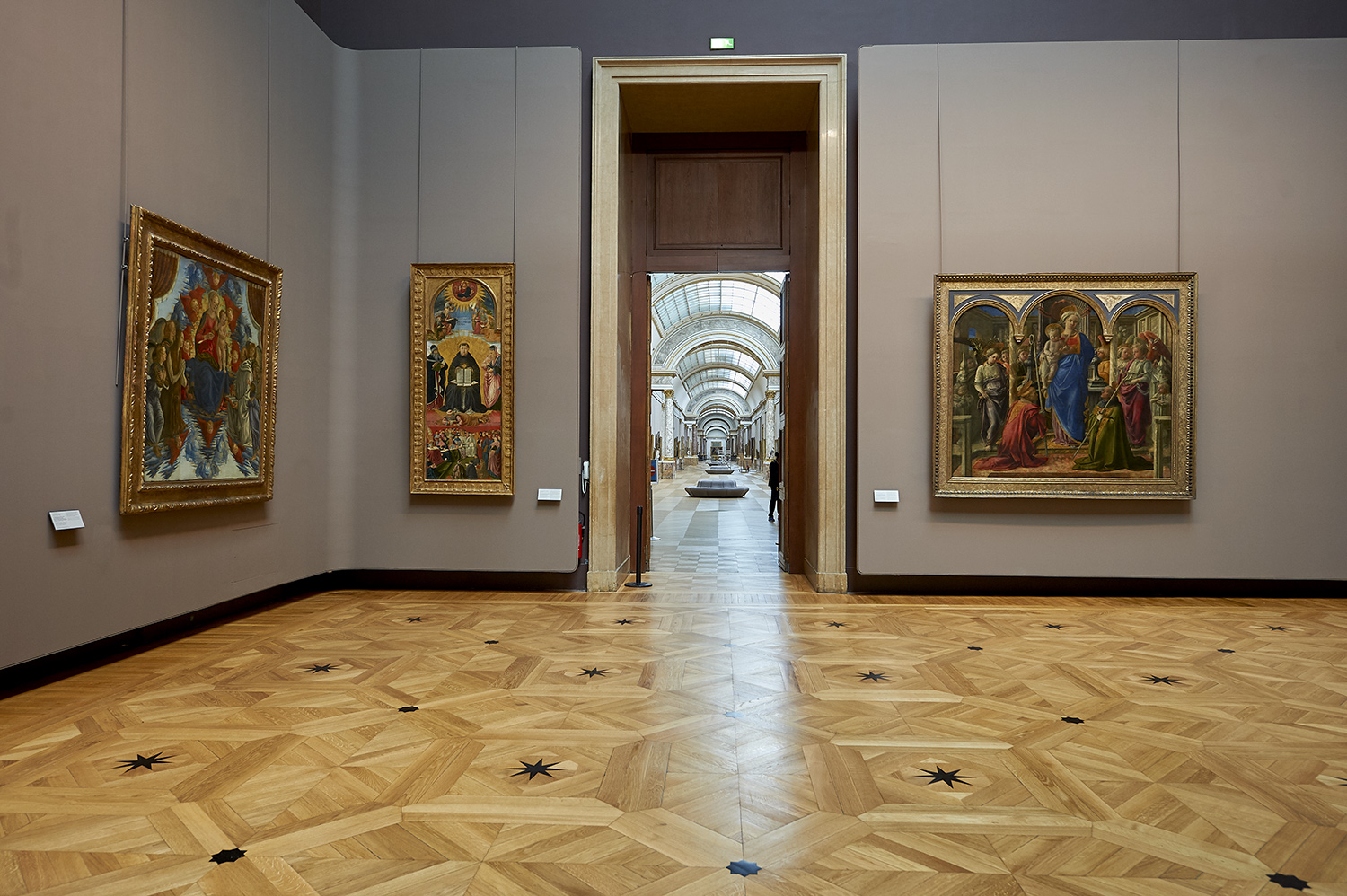
An exhibition space
From 1737 the Salon was held annually, then twice a year from 1747 until the Revolution in 1789. Crowds flocked to see the sculptures set on large tables and the paintings crowding the walls, sometimes in rows up to several metres high. The likes of Diderot penned articles about the Salons that could make or break an artist’s reputation – it was the birth of art criticism.
In 1789, the room was redesigned to improve the presentation of the works, and in particular their lighting. A glass roof was added to let in the soft, even, natural light ideal for the study of paintings. The Salon Carré thus became one of the first exhibition spaces in the world with overhead lighting.
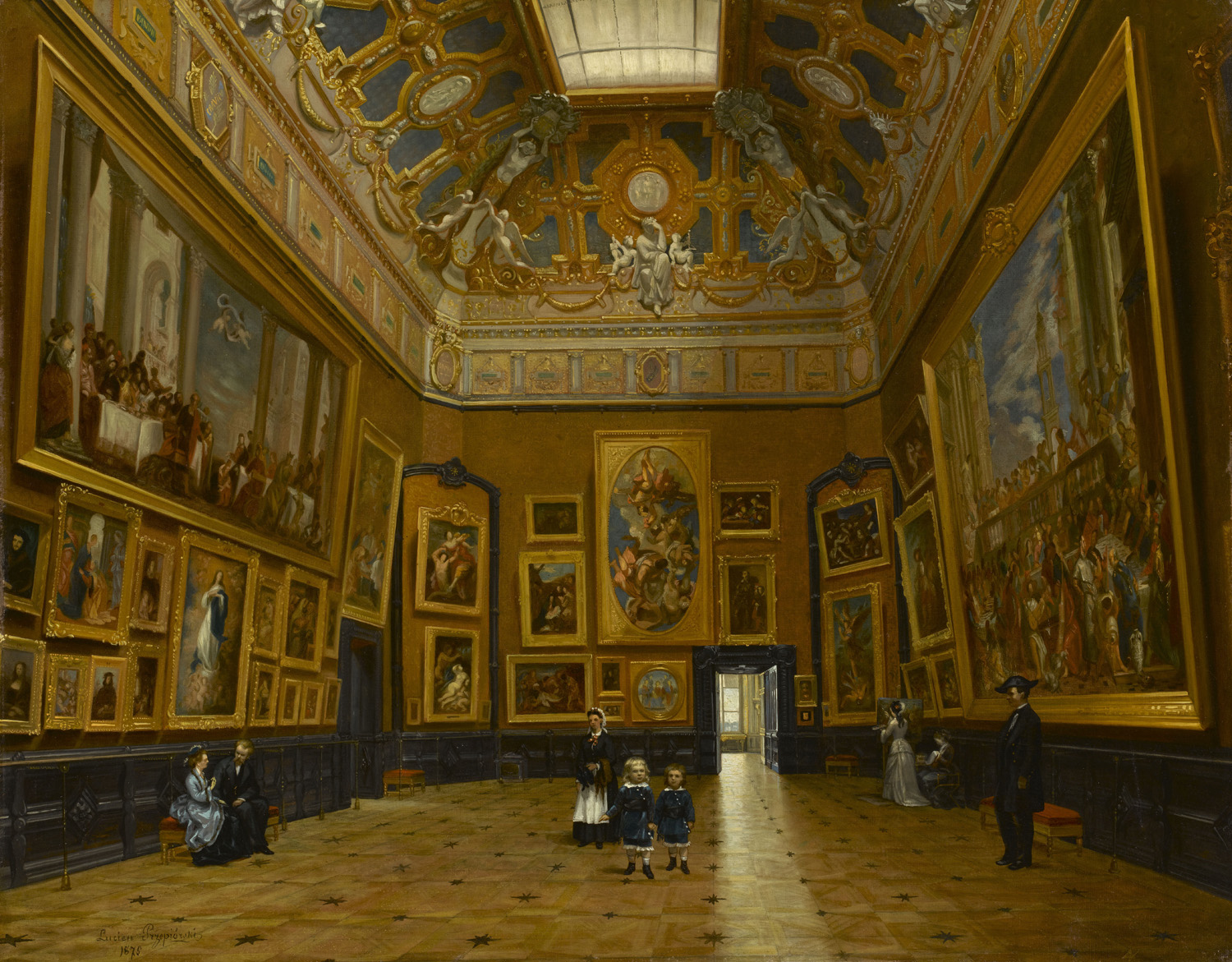
From Salon to museum
After the Revolution, the Salon, previously reserved for members of the Academy only, was opened to other artists, subject to acceptance by a formidable jury. This new ‘Salon des Artistes Vivants’ (Exhibition of Living Artists) was held in the Salon Carré until 1848, when it left the Louvre, which lacked the space to accommodate the ever-increasing number of works to display.
The architect Félix Duban then transformed the room into one of the finest in the Musée du Louvre. The magnificent ceiling decorations showcase every possible shade of blue and gold. Stucco sculptures by Pierre Charles Simart celebrated the arts of architecture, painting, sculpture and engraving. The names of famous artists are displayed in cartouches.

Did you know?
An imperial wedding
The Salon has also been the site of major historical events. On 2 April 1810, for example, it was turned into a chapel for the wedding of Napoleon and Marie Louise of Austria. Because Napoleon was divorced, the ceremony could not take place in a church, and so the wedding mass was celebrated in the Salon Carré, which was specially decorated for the occasion. The paintings were even removed from the walls, despite the reluctance of the museum’s director, Dominique Vivant-Denon.

Full steam ahead
Félix Duban’s work on the Salon brought a burst of modernity to the Louvre. The ceiling décor celebrated not only the arts but also France’s prosperity, in the form of trophies symbolising agriculture, trade and industry. The latter was represented by a recent invention: the steam engine. A spectacular entrance for the train into the history of art!
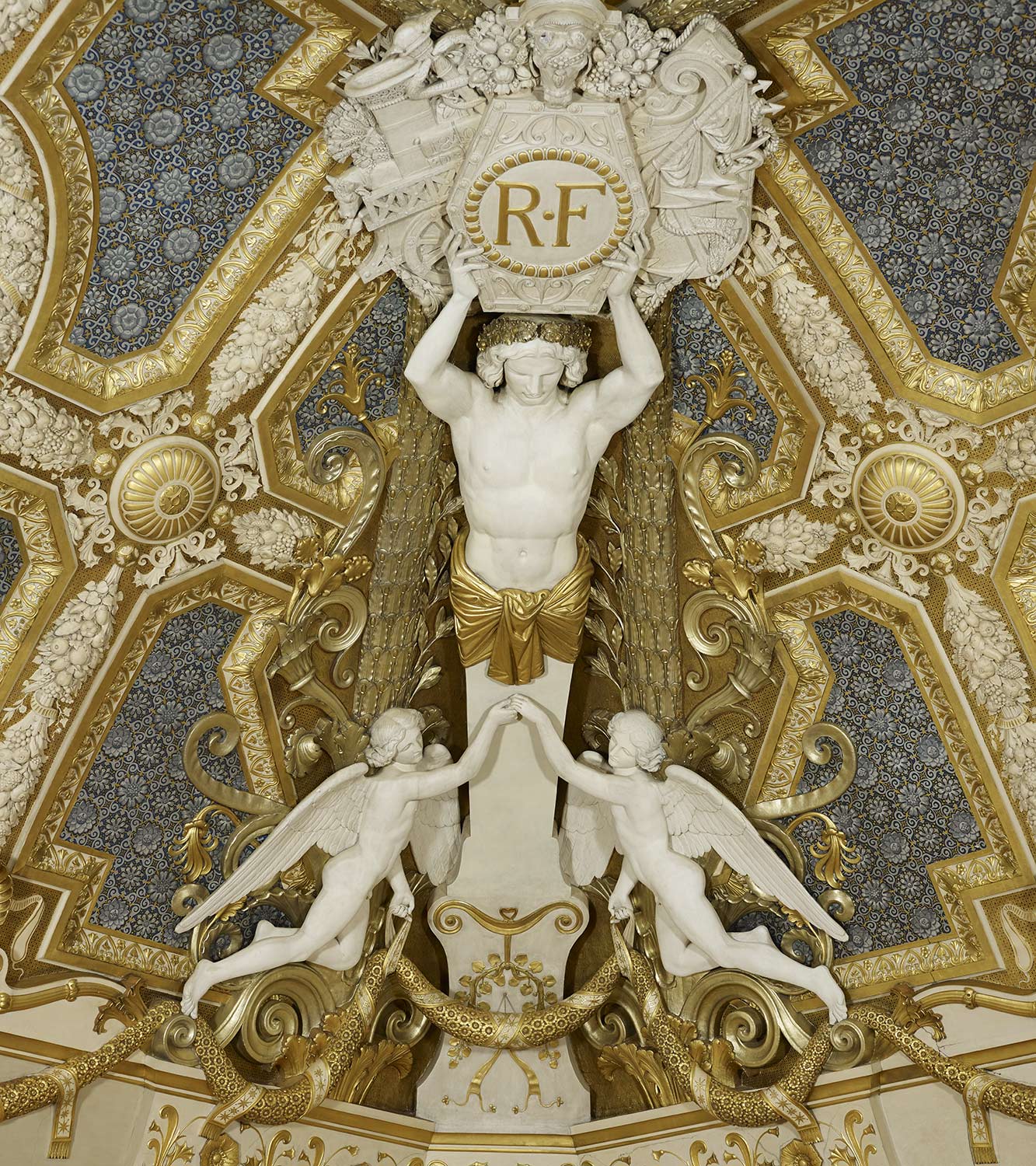
Italian painting makes a majestic entrance
Since 1971, after a new layout by the interior designers Pierre Paulin, Joseph-André Motte and André Monpoix, this sumptuous 19th-century setting has been home to part of the Louvre’s vast collection of Italian paintings. Among them are works by the ‘Italian Primitives’, the masters of the pre- and early Renaissance, offering an exceptional panorama of the art of the Trecento and Quattrocento (14th and 15th centuries, respectively). Among the masterpieces on display in the Salon Carré are Cimabue’s Virgin and Child Enthroned with Six Angels (Maestà), Giotto’s Saint Francis of Assisi Receiving the Stigmata, Fra Angelico’s Coronation of the Virgin Mary and Uccello’s Battle of San Romano.
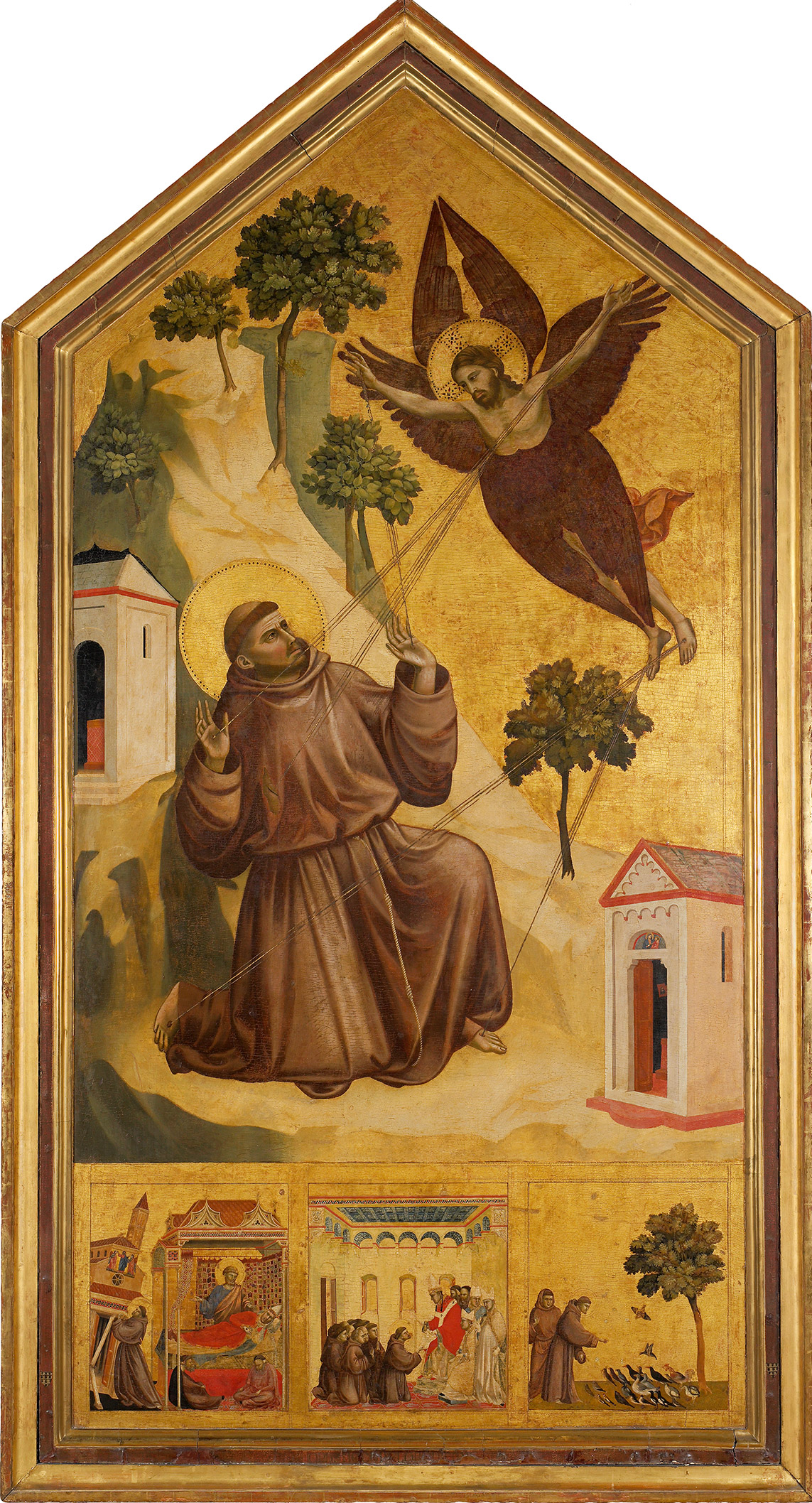
Giotto di Bondone, Saint François d'Assise recevant les stigmates
1 sur 6
Did you know?
Three paintings in three great museums
Paolo Uccello’s The Battle of San Romano is part of a cycle of three paintings commemorating the battle between the Florentines and the Sienese in 1432. The first panel, which hangs in the National Gallery in London, depicts the start of the battle, while the third, in the Uffizi in Florence, shows the defeat of the Sienese. In the central panel, held in the Louvre, Micheletto da Cotignola is depicted on his rearing black horse, launching an attack. The army begins to charge, in a scene that seems to unfold in slow motion: the still-motionless riders on the right prepare to follow those on the left who have angled their spears. Uccello’s pioneering work on movement and perspective heavily marked the Quattrocento (15th century).
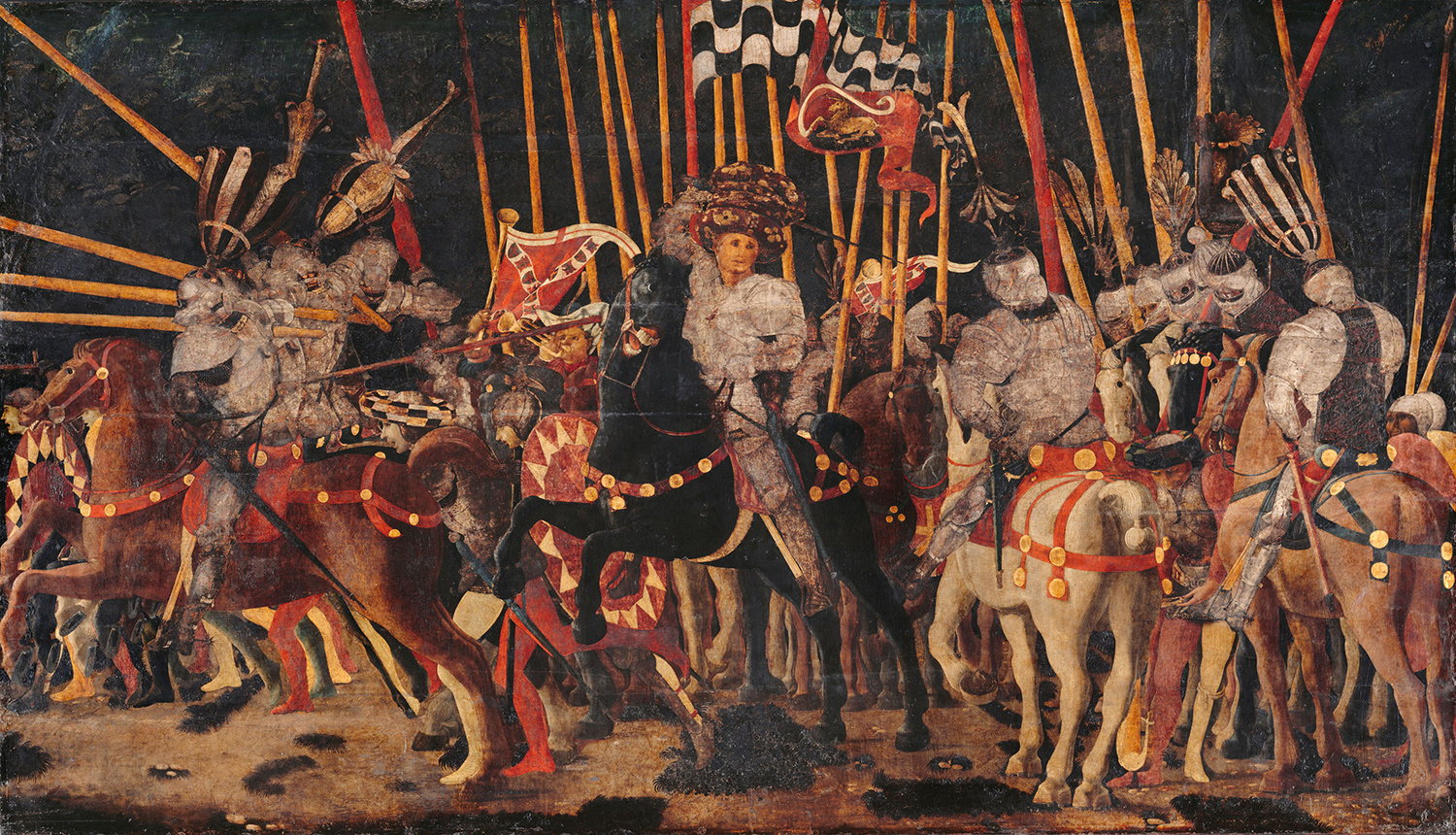
More to explore
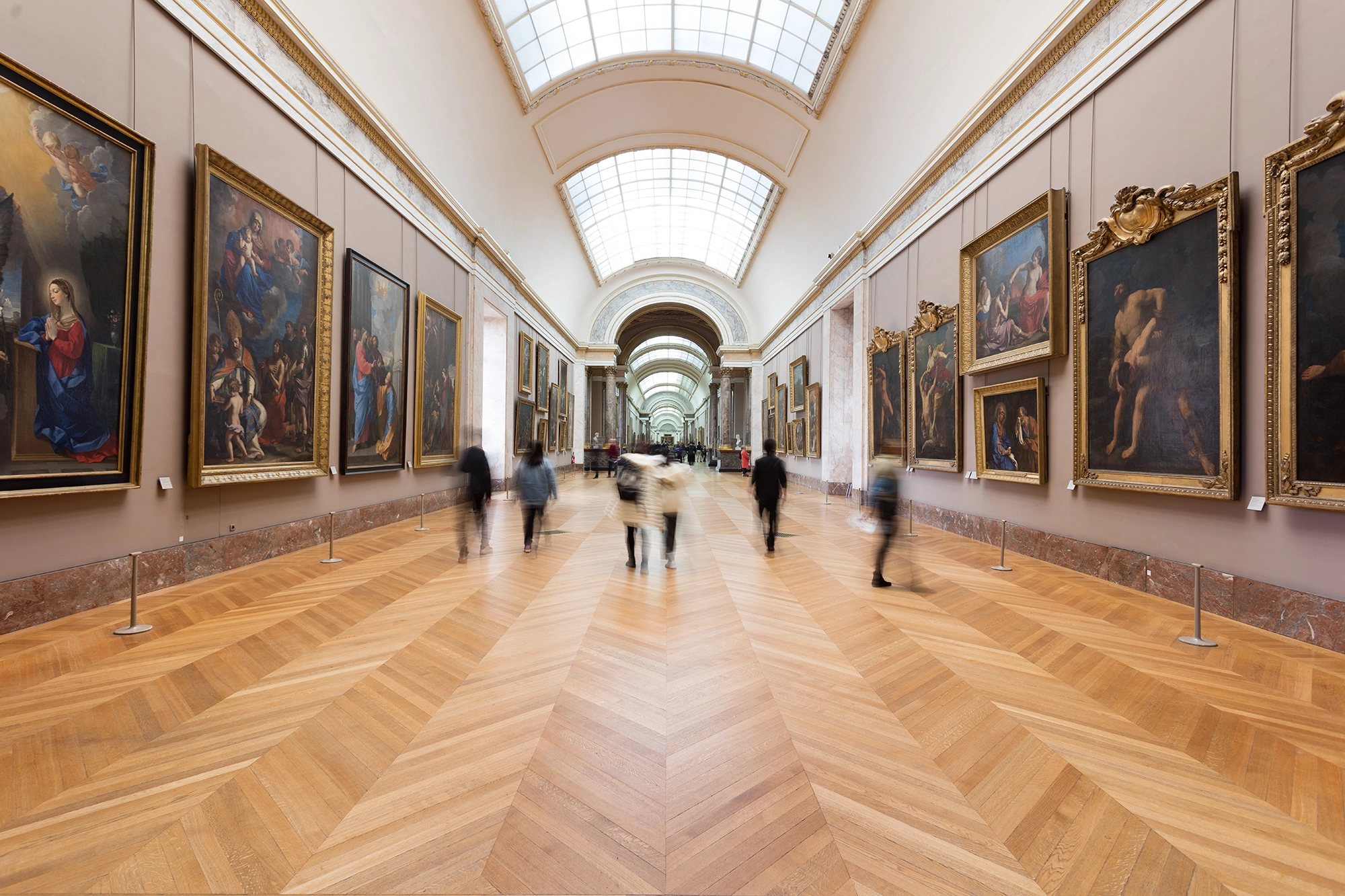
Italian painting in perspective
The Grande Galerie
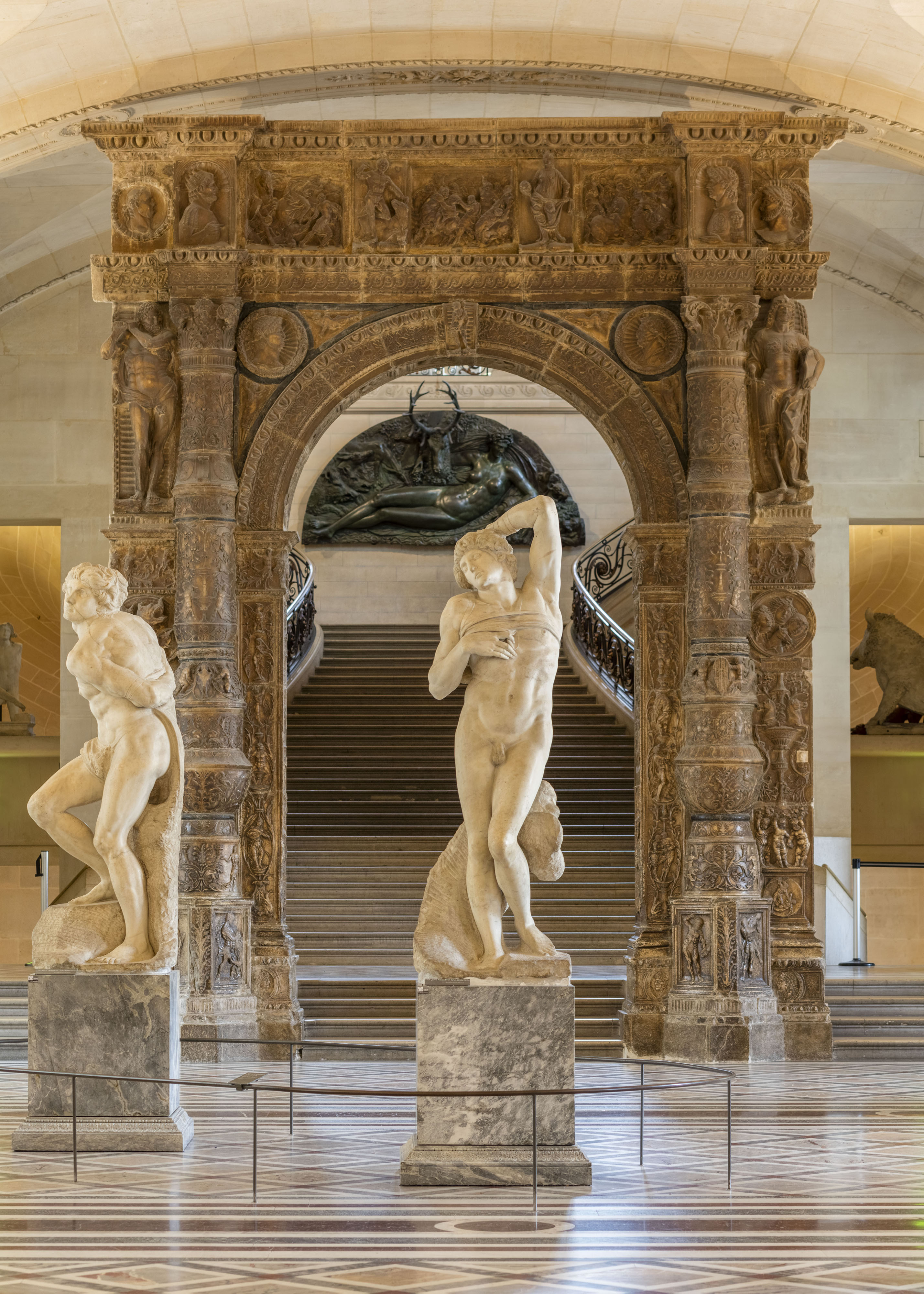
Three centuries of Italian sculpture
The Michelangelo Gallery
